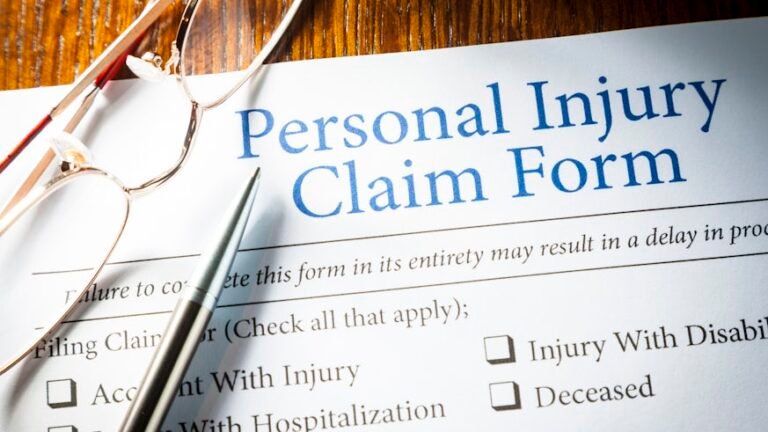Filing a legal claim in New South Wales (NSW) is not as straightforward as it may seem at first glance. Whether it’s a personal injury, public liability, or motor vehicle accident claim, many locals miss key elements that can significantly affect the success and efficiency of their case. Navigating legal processes without full knowledge of the system can lead to unnecessary delays, missed entitlements, or even complete dismissal of claims.
This article outlines the most commonly overlooked aspects of filing a claim in NSW, arming you with the insight to avoid preventable pitfalls and better understand the landscape of personal legal redress.
Missed Deadlines That Jeopardise Claims
One of the most frequently overlooked aspects of the claims process is the statutory limitation period—the legally prescribed timeframe within which a claim must be lodged. In NSW, most personal injury claims must be filed within three years from the date of injury. However, specific circumstances may shorten or lengthen this period. For example, workers’ compensation claims usually need to be reported within six months.
Failing to adhere to these deadlines can result in a complete loss of legal entitlement. While there are provisions for exceptions under certain conditions, courts tend to enforce time limits strictly. It is therefore essential to seek legal advice as early as possible to ensure timely action.
Inadequate Documentation and Evidence
Many claimants underestimate the importance of well-maintained documentation. This includes medical records, police reports, witness statements, and photographic evidence. A claim without clear, compelling evidence is difficult to substantiate.
For instance, if you’re filing a motor vehicle accident claim, photographs of the scene, repair bills, and any correspondence with insurers form the backbone of your case. In public liability incidents, such as slips or falls, capturing the conditions of the scene immediately after the event can be critical, as environmental conditions often change quickly.
Poor documentation can lead to complications in proving the incident, quantifying losses, or even linking the incident to the resulting injury.
Underestimating the Complexity of Liability
Assigning fault may appear straightforward to a layperson, but legally, it can be far more complex. Multiple parties can be partially responsible, or fault may lie with an entity not immediately apparent. Understanding contributory negligence, where the claimant themselves may bear some responsibility for the incident, can affect the amount of compensation awarded.
Moreover, in public settings or workplace incidents, legal frameworks such as the Civil Liability Act 2002 (NSW) and relevant occupational health and safety regulations must be considered. This makes determining liability a nuanced and technical process that requires careful legal interpretation.
Overlooking the Role of Independent Medical Assessments
In many claims, particularly those involving personal injury, the court or insurer may require an Independent Medical Examination (IME) to validate the extent of the injury. Many claimants either don’t anticipate this step or fail to prepare adequately for it.
The outcome of an IME can heavily influence compensation, especially in cases where long-term injury, loss of earnings, or pain and suffering are claimed. It’s essential to approach these assessments with full disclosure, accurate medical history, and an understanding of how the findings may be used.
Not Factoring in Future Losses
Another common oversight is failing to account for future economic and non-economic losses. For example, the immediate medical costs after an injury might be evident, but long-term rehabilitation, impact on employment, and psychological effects are often underestimated.
A well-prepared claim should consider not only current losses but also future earning capacity, ongoing medical treatment, and lifestyle changes. These projections usually require professional input from economists, doctors, or occupational therapists to quantify effectively.
Relying Solely on Insurance Companies
Many individuals mistakenly assume that their insurance company—or that of the other party—will handle everything fairly and transparently. While insurers have legal obligations, their primary interest is to minimise payouts. This often leads to settlements that are far below what the claimant is rightfully owed.
Legal professionals act as advocates for the injured party, helping to negotiate and contest lowball offers. Working with experienced specialists, such as those at Law Advice, ensures your claim is evaluated thoroughly and strategically from the start.
Why Being Thorough Matters
Filing a claim in NSW involves more than just submitting a form or making a phone call. Understanding the legal landscape, timelines, evidence requirements, and potential future implications can significantly alter the outcome of your case. Awareness of these commonly overlooked aspects will not only strengthen your claim but also reduce stress throughout the legal journey.
Always consult with a qualified professional who understands the complexities of NSW law and can provide tailored advice to suit your specific situation. With the right guidance and preparation, claimants can protect their rights and secure the compensation they deserve.
